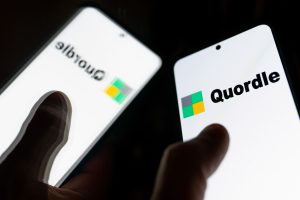Founder and CEO of JMG Public Relations, an award-winning PR firm for innovators and their mission driven startup companies.
At its core, storytelling is the art of conveying a message, an idea or some form of information through the use of narrative structure. It’s an age-old tradition used by different cultures to entertain, educate and, above all, communicate.
By arranging events, characters and emotions in a way that captivates an audience and garners a response, storytelling has the power to connect people on a deeper level. After all, isn’t one of the reasons why we tell stories in the first place? To expose ourselves to different experiences?
Importance Of Storytelling In Public Relations
The importance of storytelling stems from the ability to capture your audience’s attention. In doing so, we have the opportunity to create memorable experiences and cultivate meaningful connections between clients and their audiences.
In the realm of public relations, I’ve found that storytelling can serve as a powerful tool for crafting strategic narratives that actively engage audiences. By skillfully capturing attention and evoking emotion across your PR campaigns, messaging and branding efforts, storytelling can become the driving force behind your engagement.
The goal is to create a positive image, whether that be for a person, company or brand. Through things like press releases, social media campaigns, thought-leadership articles, events and other creative initiatives, you can use these avenues to craft a story that resonates.
I believe that understanding storytelling in PR is important to harness its power for effective communications and engagement. It can be done in a variety of formats: Oral storytelling, written narratives, digital as well as visual. However a story is conveyed, as long as it engages the senses and emotions of its intended audience, it can be effective.
Four Ways To Use Storytelling In PR
Build emotional connections. Storytelling has the power to evoke emotions and connect with people on a deeper level. It allows for the opportunity to humanize brands and organizations by crafting stories that resonate with the intended audience.
When you are able to tap into emotions, you’re creating a connection, one that elicits a feeling and helps to foster a deep connection. Loyalty amongst an audience is what brands strive for, and it is crucial for both growth and success.
Differentiate yourself in a competitive market. In today’s competitive landscape, it is imperative to stand out from competitors and establish a uniqueness about your business. What sets you apart? Through the use of creative storytelling, you can create a unique narrative that separates your business while connecting with a targeted audience.
Compelling stories that highlight a brand’s mission, values and authenticity can help connect with an audience and foster loyalty. When people can identify and align themselves with your company, you’ve set yourself apart from the competition.
Enhance message retention. Storytelling is a powerful tool that helps deliver a message in a memorable way. When sharing information creatively, it is simpler for people to understand and remember. Anything too complex or hard to digest will not be retained, and in an oversaturated world where attention spans are short, stories help cut the noise and leave a lasting impact.
Build trust and credibility. As in any relationship, trust is the foundation upon which to build. Without this meaningful connection, a relationship is likely to be fragile. Done effectively, when you implement stories into your overall creative strategy, this can play a large role in building trust and credibility.
Look to share stories that come across as authentic. Being transparent allows people to understand who you are and what you’re all about on a deeper level. Authenticity matters, and when customers place their trust in you, they’re likely to engage and become outspoken advocates of your business or brand, ultimately driving business and increasing growth.
Creative Campaigns
One notable example of storytelling in PR was the “Share a Coke” campaign by Coca-Cola. First launched in Australia in 2011, the iconic brand replaced its logo on Coke bottles with popular names and phrases, encouraging people to share a Coke with someone whose name was on the bottle.
The aim of the campaign was to create personal connections and evoke nostalgic feelings by tapping into the power of individual names and connections. “Share a Coke” generated enormous buzz and resulted in increased brand loyalty, generated sales and widespread media coverage. It was so well received that other countries around the world adopted it with their own unique twist.
As can be seen, the power of storytelling in public relations holds immense influence and significance. In a world inundated with information, storytelling in PR has the power to cut through the noise and leave a lasting impression. I urge you to embrace the impact stories can have and start weaving narratives that can resonate and inspire.
Forbes Business Council is the foremost growth and networking organization for business owners and leaders. Do I qualify?
Read the full article here










